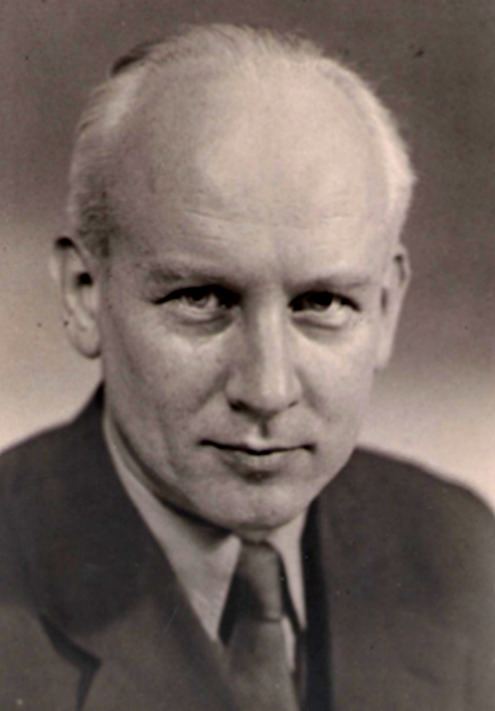Name Pavel Klushantsev | Role Film director | |
 | ||
Full Name Pavel Vladimirovich Klushantsev Occupation film director, producer, screenwriter, author Died April 27, 1999, Saint Petersburg, Russia Books What the Telescope Tells Us Movies Planeta Bur, Road to the Stars, The Moon, Voyage to the Prehistori, Mars Similar People Vladimir Yemelyanov, Curtis Harrington, Georgiy Zhzhonov, Roger Corman, Stephanie Rothman | ||
George lucas was inspired by pavel klushantsev s films
Pavel Vladimirovich Klushantsev (Russian: Па́вел Влади́мирович Клуша́нцев; 25 February 1910 in Saint Petersburg, Russian Empire – 27 April 1999 in Saint Petersburg, Russia) was a Russian cameraman of higher category (1939), film director, producer, screenwriter and author who worked during the Soviet Era. Meritorious Artist of Russia (1970). Creator of cognitive films causing enormous spectator interest in the whole world. Combined the popular scientific cinema and science fiction. He is considered the founder of genre of space fantasy in the world cinema. A self-taught special effects engineer, far ahead of his time, Klushantsev devised many effects and techniques used by major motion pictures for decades to come.
Contents
- George lucas was inspired by pavel klushantsev s films
- The Moon Luna 1965restored color by Pavel Klushantsev
- Biography
- Filmography
- Awards
- References
The Moon. ЛУНА (Luna, 1965)(restored color) by Pavel Klushantsev
Biography
Pavel Klushantsev was born in Saint Petersburg into a Russian family. His mother was a housewife of noble heritage. After the October revolution she worked as a teacher in a boarding school. During the 1930s her elder brother, a former White officer, was arrested under the suspicion of Sergey Kirov's murder and sent to prison camps. She died of starvation during the Leningrad Blockade. Pavel's father came from a small town of Staritsa in the Tver Oblast. He spent many years working as a zemstvo doctor following his graduation from the medical academy in Saint Petersburg. He was later appointed to work in the Ministry of Commerce and Industry of the Russian Empire and was granted a personal nobility. After the revolution he spent some years selling tickets on a railway station. He died in 1919.
Klushantsev graduated from the Leningrad Fototechnikum in 1930 and worked for Belgoskino as a cinematographer for four years. In 1934, he began working at Lenfilm / Lennauchfilm, where he became a director and producer, primarily making science educational films including his visionary film – Road to the Stars (1957). Prior to this film, Klushantsev's films were strictly factual, but here, the film builds on fact and extends it. The film becomes a hybrid documentary blending science with fiction edging firmly into science fiction. This film's special effects – the scientific accuracy of depicting weightlessness, construction in earth orbit, a rotating space station, and rocket travel to the moon – were the cutting edge visual effects of their time.
Planet of the Storms (Planeta Bur), Klushantsev's only feature film, was released in 1962. For this film, Klushantsev is especially noted for his meticulous design and creation of "John the Robot". Based on Chester E. Macduffee's 1911 heavy Cast-Aluminium Diving Suit, it had over 42 points of articulation on its major body joints – one of the most technically complex robot costumes of its time. The film was subsequently expanded and re-edited by Roger Corman for American distribution – as Voyage to the Prehistoric Planet (1965) by Curtis Harrington and as Voyage to the Planet of Prehistoric Women (1968) by Peter Bogdanovich. In both these versions, the original scenes drew acclaim.
Subsequent to Planet of the Storms, Klushantsev fell into disfavor in USSR and returned to making more science-based films.
He is a well-known in the whole world writer of popular scientific juvenile books.
Pavel Klushantsev spent the late years in his flat in Saint Petersburg. In his interview he criticized the post-Soviet Russia for the absence of culture and television — for the lack of interest in educational films, in raising polymaths. He died in 1999 at the age of 89. He was buried at the Smolensky Cemetery. He was survived by his wife, animator Nadezda Alexadnrovna Klushantseva (1912 — 2000), and his two children: Zhanna Klushantseva (born 1936) and Michael Klushansev (born 1945).
Pavel Klushantsev's works are featured among Russian Fantastika.
An English language documentary on Pavel Klushantsev's life and achievements, The Star Dreamer, was released in 2002 by Danish Vesterholt Film and TV.
